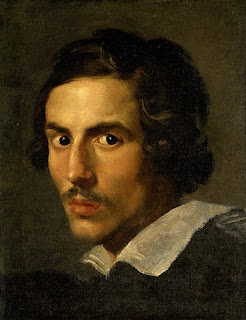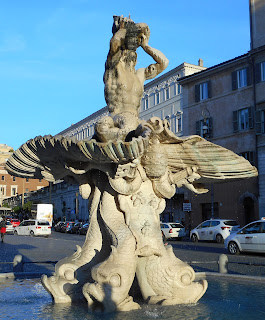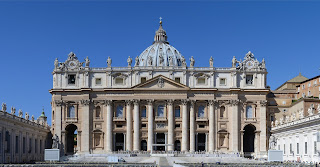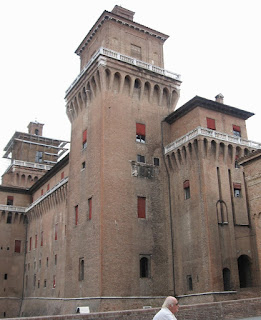Brilliant scholar could recite long passages from Dante
 |
| Jacopo Mazzoni was known for literary criticism as well as philosophy |
Mazzoni, also sometimes referred to as Giacomo Mazzoni, was regarded as one of the most eminent scholars of his period. His excellent powers of recall made him adept at recalling passages from Dante, Lucretius, Virgil and other writers during his regular debates with prominent academics. He relished taking part in memory contests, which he usually won.
Mazzoni was born in Cesena in Emilia-Romagna in 1548 and was educated at Bologna in Hebrew, Greek, Latin, rhetoric and poetics. He later attended the University of Padua where he studied philosophy and jurisprudence.
He became an authority on ancient languages and philology and promoted the scientific study of the Italian language.
 |
| Galileo Galilei was a fellow professor at Pisa University |
Mazzoni was also influenced by Plato and Aristotle and often made references to their works.
In turn, his theories about poetry influenced romantic writers who came later such as Samuel Taylor Coleridge and Friedrich von Schiller.
Mazzoni is also credited with helping to found the Accademia della Crusca, a society of scholars of Italian linguistics and philology, in 1583. The academy, in Florence, is the oldest linguistic academy in the world and the most important research institution into the Italian language.
 |
| The pala - shovel - given to Mazzoni by the Accademia della Crusca |
Mazzoni worked as a university professor, first at Macerata and then at Pisa, where he taught philosophy from 1588 to 1597. It was there he met Galileo, who was a young mathematics professor at the university. They became good friends and in May 1597, Galileo wrote Mazzoni a letter in which he commented on Mazzoni’s latest book, In universam Platonis et Aristotelis philosophiam praeludia, and also stated his inclination towards the Copernican system over the Ptolemaic one.
Later that year, Mazzoni accepted the chair in philosophy at Rome’s La Sapienza University.
He was asked to accompany Cardinal Pietro Aldobrandini on a mission to Venice in 1598. After they stopped off in Ferrara on the way back, Mazzoni was taken ill and later died. He was 57 years old.
 |
| The Rocca Malatestiana in Cesena, once a prison, now houses a museum of agriculture |
Cesena, the birthplace of Jacopo Mazzoni, is a city in Emilia-Romagna, south of Ravenna and west of Rimini. One of the main sights in the town is the 15th century Biblioteca Malatestiana, which houses many valuable manuscripts and was the first public library in Europe. The library has been preserved in its 15th century condition and is now a listed UNESCO World Heritage site. The city’s castle, the Rocca Malatestiana, was used by Cesare Borgia as a prison during the Italian Wars and is now a museum.
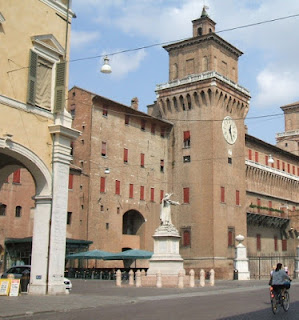 |
| The Castello Estense is the centrepiece of the city of Ferrara, where Mazzoni died |
Ferrara, where Jacopo Mazzoni died, is a city in Emilia-Romagna, about 50 km (31 miles) to the northeast of Bologna. It was ruled by the Este family between 1240 and 1598. Building work on the magnificent moated Este Castle (Castello Estense) in the centre of the city began in 1385 and the castle was added to and improved by successive rulers of Ferrara until the end of the Este line. The castle was purchased for 70,000 lire by the province of Ferrara in 1874 to be used as the headquarters of the Prefecture. You can still see Ferrara’s original narrow, medieval streets to the west and south of the city centre, between the main thoroughfares of Via Ripa Grande and Via Garibaldi. These were the original heart of the city in the middle ages before the Este family redesigned it.
Also on this day:
1726: The birth of physicist Giovanni Aldini
1886: The death of physician and politician Agostino Bertani
1926: Airship leaves Rome for the North Pole
1991: The Moby Prince disaster
(Picture credits - Mazzoni's shovel by Sailko CC-BY-3.0; Rocca Malatestiana by Otello Amaducci CC-BY-SA 3.0)
Home




